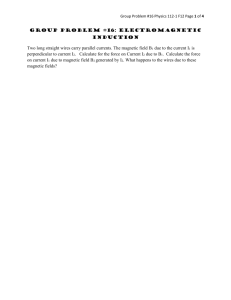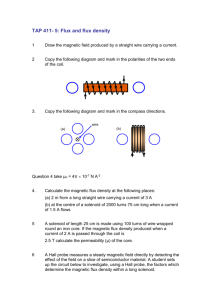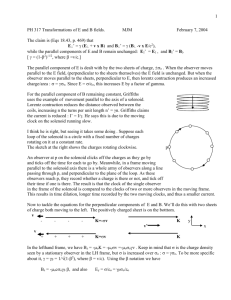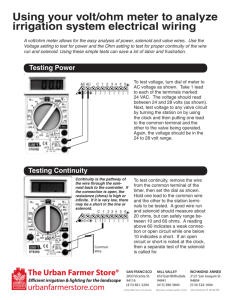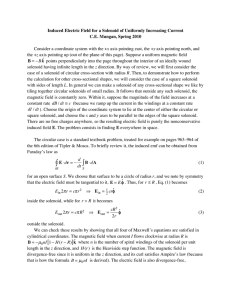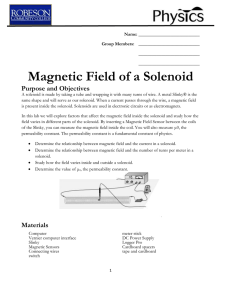magnetic Field in a Slinky
advertisement
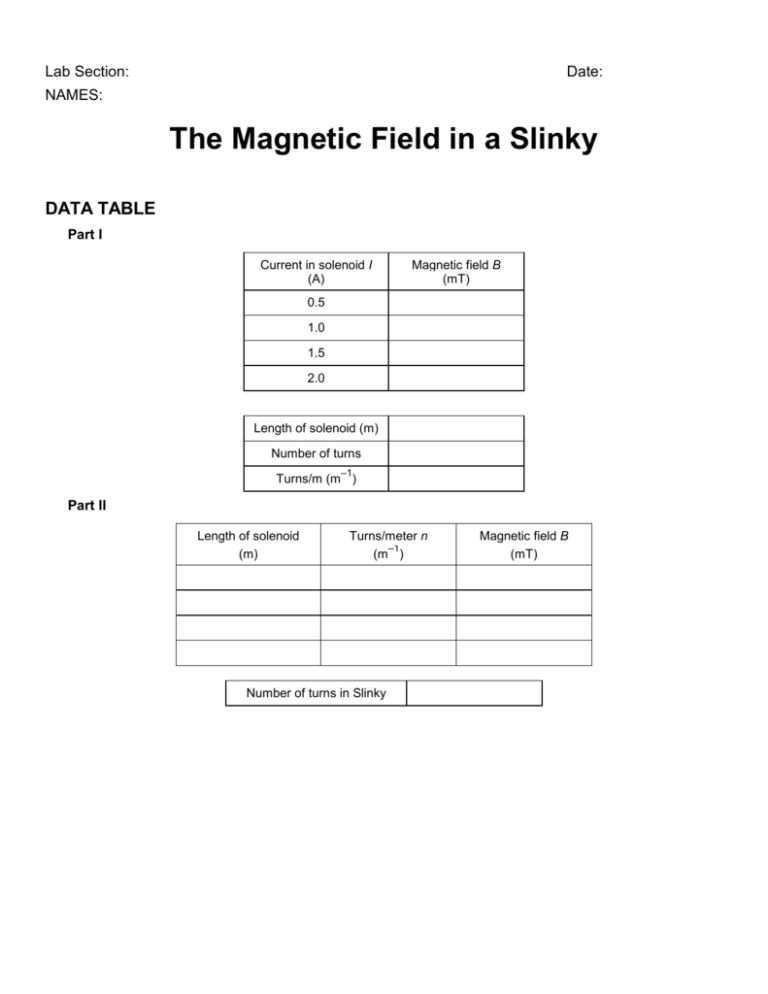
Lab Section: Date: NAMES: The Magnetic Field in a Slinky DATA TABLE Part I Current in solenoid I (A) Magnetic field B (mT) 0.5 1.0 1.5 2.0 Length of solenoid (m) Number of turns –1 Turns/m (m ) Part II Length of solenoid (m) Turns/meter n –1 (m ) CCurrentCC Number of turns in Slinky Magnetic field B (mT) ANALYSIS Insert graph of magnetic field B vs. the current I through the solenoid (of part I). How is magnetic field related to the current through the solenoid? Determine the equation of the best-fit line, including the y-intercept. Note the constants and their units. plot a graph of magnetic field B vs. the turns per meter of the solenoid (n) for part II. How is magnetic field related to the turns/meter of the solenoid? Determine the equation of the best-fit line to your graph. Note the constants and their units From Ampere’s law, it can be shown that the magnetic field B inside a long solenoid is B 0 nI where 0 is the permeability constant. Do your results agree with this equation? Explain. Assuming the equation in the previous question applies for your solenoid, calculate the value of 0 using your graph of B vs. n. Look up the value of 0, the permeability constant. Compare it to your experimental value. Was your Slinky positioned along an east-west, north-south, or on some other axis? Will this have any effect on your readings? EXTENSIONS Carefully measure the magnetic field at the end of the solenoid. How does it compare to the value at the center of the solenoid? Try to prove what the value at the end should be. Take data on the magnetic field intensity vs. position along the length of the solenoid. Check the field intensity at several distances along the axis of the Slinky past the end. Note any patterns you see. Plot a graph of magnetic field (B) vs. distance from center. How does the value at the end of the solenoid compare to that at the center? How does the value change as you move away from the end of the solenoid



